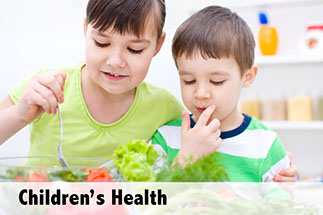CONDITIONS
SYMPTOM CHECKER
Male
Female
Child
Arm, Hand & Shoulder Concerns
Legs & Feet Concerns
Dental & Mouth Concerns
Ear & Nose
Eye Conditions
Head Conditions
Arm, Hand & Shoulder Concerns
Legs & Feet Concerns
Front
Back
Arm, Hand & Shoulder Concerns
Dental & Mouth Concerns
Ear & Nose
Eye Conditions
Head Conditions
Arm, Hand & Shoulder Concerns
Dental & Mouth Concerns
Ear & Nose
Eye Conditions
Head Conditions
Front
Back
Arm, Hand & Shoulder Concerns
Neck Links
Head & Neck Concerns
Arm, Hand & Shoulder Concerns
Neck Links
Head & Neck Concerns
Front
Back
Online Clinic
Wise Healthcare
Prevent Poisoning
Do This, Not That

Print on Demand
• The 57 poison control centers across the U.S. report more than 2 million poisonings each year. Of these, more than 90 percent occur in the home.
• More than half of home-related deaths from accidental injuries are due to poisons. Common ones are medicines, drugs, toxic chemicals, carbon monoxide, and lead. One out of every six children ages 6 and younger has toxic levels of lead in their bodies.
Know the poison control center phone number: 1-800-222-1222. Write it on or near every landline phone in your house. Program it into your cell phone(s). If you think someone has been poisoned and is awake and alert, call the poison control center. Someone will answer 24 hours a day, 7 days a week. You will get advice on what to do. If the person is not breathing or has collapsed, call 911.
Be ready to give the Poison Control Center the following information:
• The name of the substance taken or a description of what the person came in contact with
• The amount and when it was taken
• The person’s age, gender, and weight
• How the person is feeling and reacting
• Any medical problems the person has
Chemical & Alcohol Poisoning
Do This
Get down on the floor and follow your child to look at things from his or her point of view. Address items that pose a safety risk for your child.
Not That
Do not leave cleaning liquids and other chemicals in cabinets where children can get them. NEVER mix bleach and ammonia together or products that contain these substances.
Do This
Put child-resistant latches on cabinet doors in the kitchen, bathrooms, and garage. Keep products in original containers with original labels.
Not That
Do not transfer harmful products to soft drink bottles or any other containers. Do not store cleaners and harmful chemicals with or near foods.
Do This
Make alcoholic drinks unavailable to teens. Keep alcohol out of reach of children. The same for mouthwash and flavor extracts that contain alcohol. Give children juice instead of alcohol.
Not That
Do not allow minors to drink alcohol. Do not drink alcohol (or smoke) if you are pregnant. Do not drink alcohol if you have hepatitis.
Do This
Prevent mold and fungus. Keep bathroom tiles, shower curtains, and other areas that get moisture, clean and dry. Repair water leaks in ceilings, walls, and baseboards.
Not That
Do not try to remove black mold on your own, especially if it is extensive or hidden behind drywall. Get a professional to diagnose and fix a mold problem.
Do This
Use household cleaners that are safe and nontoxic. Store lye, drain cleaners, pesticides, and other poisons in a locked cabinet and out of children’s reach.
Not That
NEVER leave bottles and containers that have a skull-and-crossbones sign, the word “poison” or “harmful or fatal if swallowed” in children’s reach. Do not let children have access to these products.
Do This
Keep children, pets, and their toys off the grass and other areas where weed killer and pesticides have been used. Better yet, use non-toxic and least toxic lawn care practices and products.
Not That
Do not leave ant or other insect killer or traps on floors or anywhere children and pets can get them. Do not keep poisonous plants in your house or in children’s reach. Examples are mistletoe, holly, English ivy, lily of the valley, Dieffenbachia, and rhododendron.
Do This
Get your house tested for radon. This is an odorless and invisible gas that causes lung cancer. Use a home-testing kit or have it done by a person qualified in your state. Get a professional to fix a radon problem.
Not That
Do not just rely on sealing cracks to get rid of radon.
<
>
Lead Poisoning
Do This
Walls, furniture, and toys painted before 1978 may have lead paint. This can be a hazard if the paint peels or cracks. Find out if you have lead paint in your house from your health department or the HUD Lead Listing at 888.LEAD.LIST (888.532.3547).
Not That
Do not strip or sand walls that have lead paint. Lead in the dust is in the air and settles on the carpet, toys, and other objects in the room. Do not let children eat paint chips or chew on window ledges, cribs, or other surfaces that have lead paint.
Do This
Buy lead-free toys that are safe for children. Some very old toys and some toys currently made in foreign countries may contain lead. Find out about toy and other product recalls due to lead from www.cpsc.gov.
Not That
Do not let children play with toys, toy jewelry, clothing, or accessories that have lead paint or lead in them. Have children wash their hands before they eat or sleep.
Do This
Buy and use dishes, containers, and pottery that do not contain lead. Read labeling.
Not That
Do not store drinks and food in lead crystal containers or lead-based pottery or dishes.
Do This
Lead may be in fixtures or water pipes and can leach into water that flows through the pipes. Use cold water for drinking or cooking and let it run for a few minutes before using.
Not That
If your water pipes contain lead, don’t make drinks with or cook with water from a faucet’s hot water. Boiling the water does not get rid of lead.
<
>
Carbon Monoxide (CO) Poisoning
Do This
Get your fireplace, heating system, water heater, and any other gas, oil, or wood burning appliance serviced by a qualified technician every year.
Not That
Don’t use a generator, charcoal grill, camp stove, or other portable gas or charcoal-burning device inside your home, basement, or garage. Do not use any of these near an outside window, either.
Do This
See that your oven, fireplace, and wood stove are well vented.
Not That
Don’t turn on a gas oven and leave the door open to heat your house.
Do This
Install a carbon monoxide (CO) detector on each floor and outside each sleeping area. Test the alarm monthly. Replace batteries at least once or twice a year, such as in the spring and/or fall when daylight saving time changes. If the alarm sounds, leave your home right away and call 911.
Not That
Don’t run a car or truck inside a garage that is attached to your house, even if you leave the door open. Do not cover the bottom of a gas oven with aluminum foil. Doing this can block the combustion of air flow through the appliance and can produce CO.
<
>
This website is not meant to substitute for expert medical advice or treatment. Follow your doctor’s or health care provider’s advice if it differs from what is given in this guide.
The American Institute for Preventive Medicine (AIPM) is not responsible for the availability or content of external sites, nor does AIPM endorse them. Also, it is the responsibility of the user to examine the copyright and licensing restrictions of external pages and to secure all necessary permission.
The content on this website is proprietary. You may not modify, copy, reproduce, republish, upload, post, transmit, or distribute, in any manner, the material on the website without the written permission of AIPM.
2021 © American Institute for Preventive Medicine - All Rights Reserved. Disclaimer | www.HealthyLife.com

















































